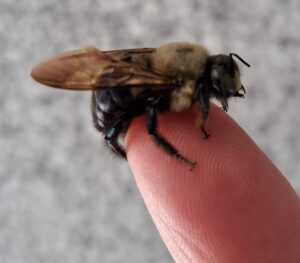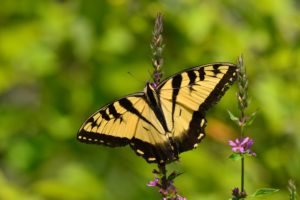
People enjoy parks and forests for many reasons. Even if botany is not the main reason, most people would not enjoy parks and forests without the native vegetation, including the forest trees. This is why I’m writing about native insects today: to connect the dots between these vital natural resources and our wonderful parks and forests.

Most people are aware of insect pollinators and associate bees and butterflies with flowers. Many other insects also pollinate flowers though, including beetles, flies, moths, and wasps. Our native wildflowers are dependent on our native insects. Even the valuable black cherry timber tree depends on insect pollinators. Some plants take it a step farther and rely on insects to disperse their seeds. Some spring ephemeral wildflowers depend on ants to move the seeds away from the parent plant.
Native insects such as wasps, beetles, and syrphid flies are nature’s pest control service. These keep other insects in check. Finally, many people enjoy birdwatching as part of the park or forest experience. The vast majority of baby birds depend on an insect diet, with many adult birds also feeding on insects. Without these insects, our parks and forests would lack many native plants (including some trees) and beautiful birds. I hope your next visit to a forest or park provides an opportunity to see and appreciate some of these small but important critters!

Photo by Barbara Lewis, Nockamixon State Park
Do you want to do more for insect biodiversity? Helping out at home is relatively easy:
- Plant pesticide-free native vegetation if you have room;
- Leave some stems and fallen leaves from autumn to late spring to protect overwintering insects;
- Avoid using insecticides around pollinator habitat; and
- Replace white outdoor lighting with yellow lights to attract fewer insects to their demise at night, and consider installing shielding and a motion detector to direct light where and when it is needed.
Written by Nate Reagle
Nate is an independent insect biodiversity and conservation advocate. He has a Bachelor’s degree in wildlife and fisheries science from Penn State and a Master’s degree in forest science from the Yale School of Forestry. He has developed pollinator conservation plans and insect conservation practices for resource managers and co-authored the “Introduction to Insects” booklet published by Penn State Extension. Nate is also a member of the Pennsylvania Biological Survey’s Invertebrate Technical Committee.




